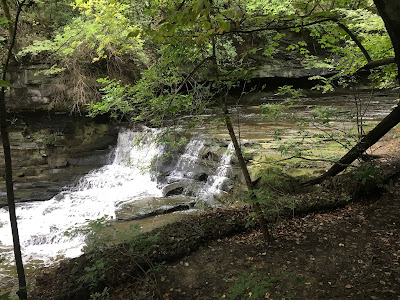In this post, I'll offer some guidelines for interpretation and display an edited version of the bassoon solo from the beginning of the second movement.
Guidelines:
Maybe that's not quite the right word to use for developing an interpretation for this solo, because the musical indications instruct the performer to use some freedom when playing it.
Capriccioso,
quasi recitando,
dolce espressivo -- all terms dealing with expression are the indications for this solo.
Add to that
the simple accompaniment and there's a good amount of room for personal expression in this solo.
In fact, I'm actually a bit hesitant to offer an interpretation for this solo because I've heard many that differ from mine that I really like!
This solo is one of the few heard at auditions in which I can listen a bit more for the individual voice of the performer. I want to know what's in that person's heart when playing this solo.
Nonetheless, I'll venture to offer some suggestions.
1. Don't use excerpt books! They are full of mistakes and edits by people other than the composer. The
Scheherazade solo and cadenzas are notoriously badly represented in excerpt books. Except for reference to music which is still not in the public domain
there is no reason to use them.
IMSLP has made them obsolete. There is now no excuse for bassoonists not to know the score (also available on IMSLP) and have a copy of the complete bassoon part.
2. Given that this solo consists of only seven pitches, other areas besides range must be exploited for expressive riches. Look at vibrato, rubato, added dynamics and implied meters for resources.
3. Be sure to examine intonation. There is no reason that this solo can't be played beautifully in tune! It's easy enough that you can focus on achieving pristine intonation. Matching pitch and tone quality between C# and D is important. Also, be sure that E is supported enough to relate well to F#. Be careful that G and A don't rise in pitch at full volume. Be careful to adjust according to which direction you approach a problem note. If coming to a note with a flat tendency from above it, you will need to keep the support up and not let it go because you are descending, for instance.
OK, here's my interpretation in
red below.
In the opening, notice the 2/8 meter implied by the slurred groups. Generally, slurred notes are grouped in such a way as to provide emphasis on the beginning part of the slur, so it's helpful to stress the first 16th in each group. This emphasis (as opposed to stressing the 8th notes) will also help bring out the accents in the next section as the stress gets relocated to the end of the groupings on the 8th notes.
I follow the general rule of phrasing --
"Up is Up and Down is Down" at the outset by allowing each 2/8 group to relax in intensity as the phrase relaxes in pitch to the note B. In general, the places for
crescendo are marked, except at the end. What the phrasing needs is a few more places for
diminuendo to set the level low again. Otherwise, there are three
crescendos in a row (one per line).
In the second line, measure 4 there is a small detail. Many editions have accents over the second E and the F#, but the score shows
tenuti, just like those two bars later. I think the
tenuti work better here, unifying and simplifying the interpretation.

Many bassoonists play an echo phrase in the second line to add more contrast to the solo. I prefer the echo to start on the second beat of the next to last bar of line 2. This way the echo coincides and reinforces the embellishment of the previous phrase (which starts on the fourth bar of line 2). Compare the last two notes of the 4th bar with the last four notes of the 8th bar of the line and you'll understand my reasoning. Also, then the first phrase and echo are complete phrases and not fragments.
Rubato should play a role in any interpretation of this solo. It's really boring to hear this played steadily at
♪ = 112! Push and pull of tempo can come in line 2 with the
tenuto 8ths holding back and the 16ths moving forward slightly. The accented section before it can have a slightly faster tempo if desired as well. All deviations from a steady tempo should be subtle and only be used to reinforce harmonic changes and other expressive ideas.
As I said before, there are many other wonderful interpretations of this solo to be heard in recordings. The Reiner recording with Leonard Sharrow is a great place to start, but also listen to the New York Philharmonic with Yuri Temirkanov (Judy LeClair) and the recordings with Ormandy and the Philadelphia Orchestra (Schoenbach, Garfield) for inspiration.


















































